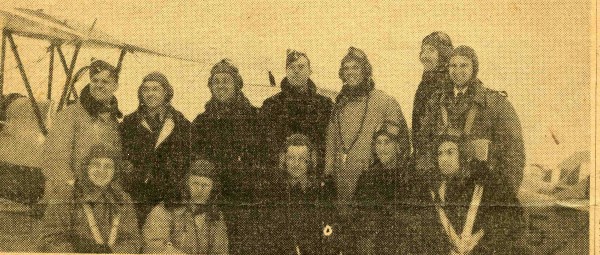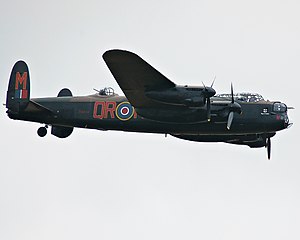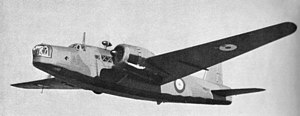
This picture is a portion of the 57th Squadron, and Arthur Allen Bussell can be seen in the middle of the back row.
Arthur Allen Bussell
Background
Arthur Bussell was a Canadian citizen who became a Pilot in the second World War. He attended Glebe Collegiate Institute as well as Nepean High School. He was attending Ontario Agricultural College until the age of 23, at which point he joined the RCAF (Royal Canadian Air Force) at a Toronto Recruitment Centre. Arthur was a middle-upper class citizen, being a white male, who was bilingual with high school training in the French language. He was a member of the United Church and lived in Britannia Heights. Arthur was born in Ottawa Ontario, but his father was born in Eddyville. His father worked as a clerk at a hardware store, and his mother was dead upon his recruitment into the RCAF. In his RCAF interview on September 16th 1940, he was recorded as having none of the typical defects or disabilities, but said he had a couple scars, was 5 ft 11 inches tall, weighed 165 pounds, and had a full chest expiration measurement of 37 inches.
After he had entered the RCAF, he proceeded to move from Toronto to Carberry, to Brandon, and then to Halifax, which was the primary spot for transportation overseas to Europe, almost always by boat. In Europe, he served as a Pilot, transporting troops, doing bombing runs, and providing reconaissance in the No. 57 Squadron.
Military Service
After he had entered the RCAF, he proceeded to move from Toronto to Carberry, to Brandon, and then to Halifax, which was the primary spot for transportation overseas to Europe, almost always by boat. Halifax was also the primary convoy assembly location, specifically in Bedford Basin. In Europe, he served as a Pilot, transporting troops, doing bombing runs, and providing reconaissance in the 57th Squadron. The 57th Squadron had been around since World War 1, and in the first World War, they succeeded in destroying 166 enemy aircraft, dropping 285 tons of bombs, exposing 22 030 photographic plates, and running 196 successful reconaissances.

The Squadron's badge can be seen above with the motto Corpus Non Animum Muto (I change my body, not my mind), and a phoenix sitting on two flamings logs positioned fesse-wise in the middle of the badge. The emblem commemorates the time in World War 1 when the entirety of the flying personnel became casualties, but were quickly replaced with new troops to keep the Squadron in action. (need to cite source here)
The 57th Squadron, as previously stated, provided reconaissance in the forms of photographs of enemy movement and bases, and ran bombing runs over enemy lines. Later in the war, they provided mail services. Arthur and a portion of the 57th Squadron can be seen at the top of the page. Throughout the war, the 57th Squadron attacked at every opportunity possible, even when the Germans were advancing and forced a retreat upon the Allies. Planes were replaced and swapped out in 1941 and 1942 (Wellingtons were replaced by Lancasters) and continued night-dusk raids and bombings in 1942. (need to cite source here)

Avro Lancaster, which replaced the Wellington.

Vickers Wellington, which was replaced by the Lancaster.
This is when Arthur was shot down, on February 4th, 1942, in one of the bombing raids. Arthur was known to be transporting I.F.Fs (Identification Friend or Foe) when he was shot down.. At the end of his military career, Arthur was recorded as rank Sgt. Pilot in the RCAF. A record shows that Arthur was shot down on one of the early and risky "Low Level" operations, targeting the Railway Yards & Sidings at Hanau, near Frankfurt. (need to cite source here) The 57th Squadron was successful in its bombing mission, but was caught by enemy FLAK fire and searchlights. Another Squadron member, Sgt. Lees, was the only surviving member of the crash, and was detained and kept as a POW for the remainder of the war.
Death and Memorial
Sadly, Arthur actually died on the battlefield a few months before the No. 57 Squadron was properly congratulated by HM King George VI, and one year after that, the Squadron was honored by another royal visit from the King and Queen. Arthur had married shortly after being recruited to the RCAF (in typical soldier fashion), and his wife was sent the Memorial Cross along with a Royal Message. Arthur is commemorated at the Durnbach War Cemetery in Germany. (need to cite source here)
His enlistment was important towards our society today as he fought for our future against the Axis powers, and protected the Allies through reconnaissance, bombing runs, and supply transportation. He overcame a probable middle-class citizenship and became a war hero, along with many other brave men. He is commemorated and praised by many, and served bravely to preserve our culture and country.
Comments (2)
Rachel Collishaw said
at 9:22 pm on May 2, 2012
Use the subtopics as headers and put captions with your pictures.
Need citations and works cited also
Stephen said
at 10:02 am on May 3, 2012
Few Spelling errors, what plane did he fly, and did he die exactly,
You don't have permission to comment on this page.